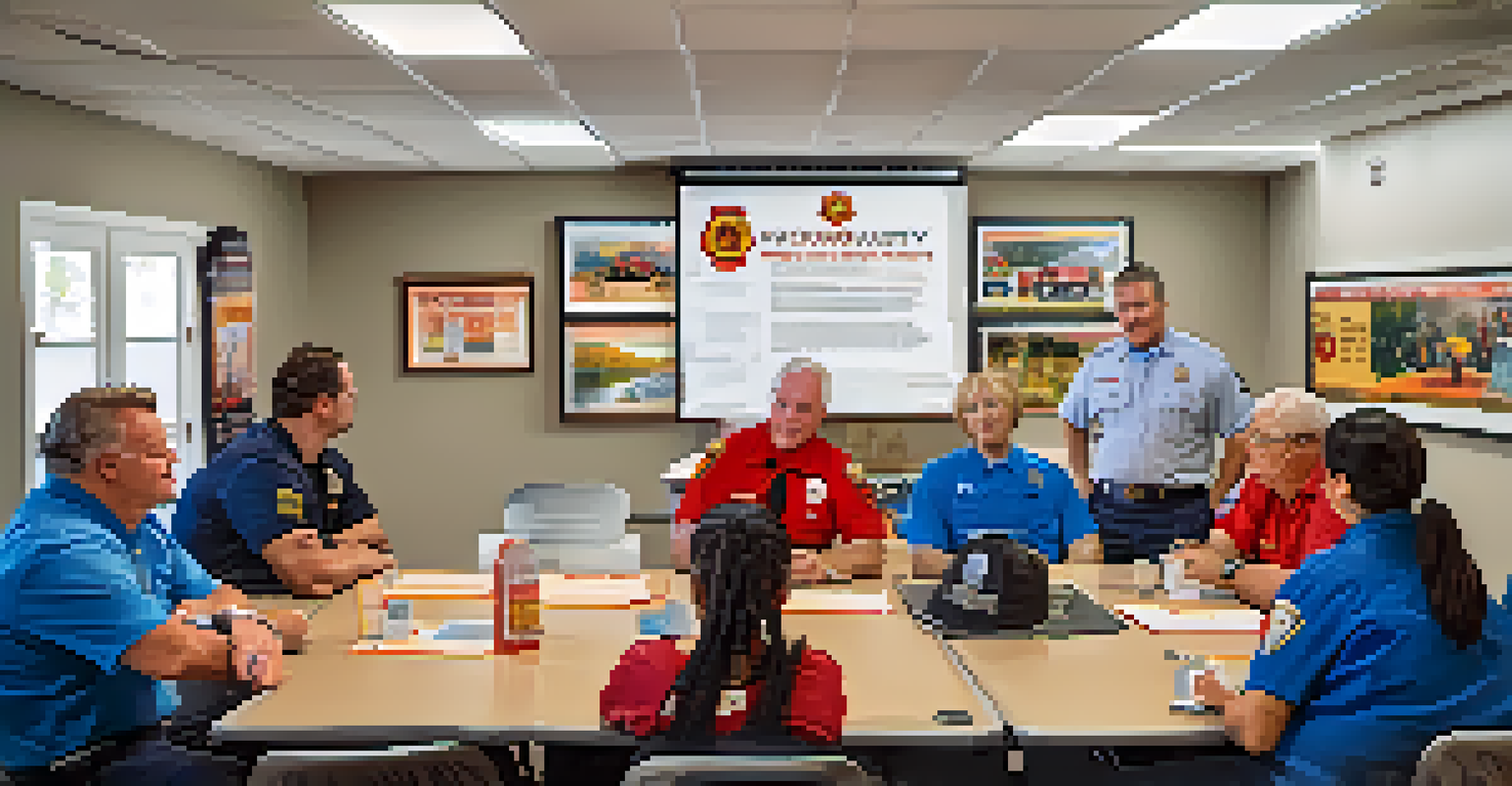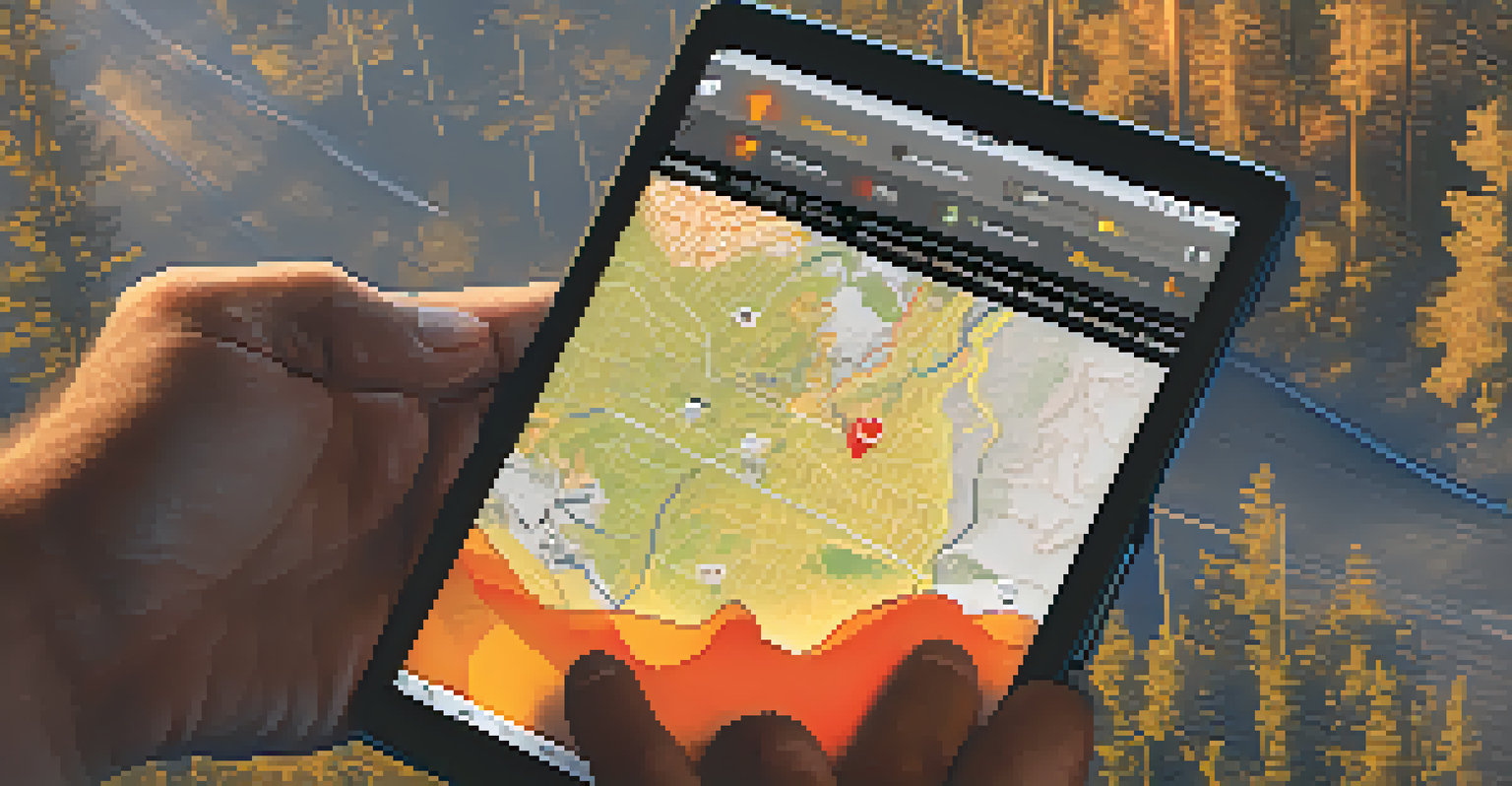Wildfire Risk Assessment and Preparedness in California

Understanding Wildfire Risks in California's Ecosystem
California's diverse landscapes, from coastal forests to arid deserts, contribute to unique wildfire risks. The state experiences a Mediterranean climate, combining wet winters and dry summers, which can lead to the rapid spread of wildfires. Factors such as vegetation, topography, and weather patterns all play a crucial role in determining how likely an area is to catch fire.
The best defense against wildfire is a proactive approach to fire safety and community preparedness.
In addition to natural elements, human activities significantly influence wildfire risks. Urban development near wildland areas creates a phenomenon known as the Wildland-Urban Interface (WUI), where homes are at greater risk of fire. Understanding these risks is vital for residents and local authorities as it helps prioritize areas that need more attention in terms of fire prevention and safety measures.
Moreover, the impact of climate change cannot be ignored. Rising temperatures and prolonged droughts are making conditions even more favorable for wildfires. By assessing these risks, California can implement more effective strategies to mitigate the threat and protect both the environment and communities.
The Science Behind Wildfire Behavior
Wildfire behavior is influenced by several key factors: fuel, weather, and topography. Fuel refers to the materials that can burn, such as trees, shrubs, and grasses. The type and amount of fuel present in an area can drastically affect how quickly and intensely a fire spreads.

Weather conditions, including temperature, humidity, and wind speed, also play a crucial role. For instance, high temperatures and strong winds can exacerbate fire conditions, allowing flames to travel faster and further. Understanding these dynamics helps fire management teams predict fire behavior and allocate resources effectively during a wildfire event.
Wildfire Risks in California
California's unique geography and climate, combined with human activities and climate change, contribute to significant wildfire risks.
Topography adds another layer of complexity. Fires tend to move faster uphill than downhill due to the rising heat and flames. This means that areas with steep slopes can experience more intense fires. By assessing these factors, officials can better prepare and respond to potential wildfire threats.
The Importance of Community Preparedness
Community preparedness is essential in mitigating wildfire risks. Residents living in fire-prone areas should have an emergency plan that includes evacuation routes and communication strategies. Being proactive can save lives and property when a wildfire strikes.
Wildfires are a natural part of California's ecosystem, but we must adapt our communities to coexist with them safely.
Engaging with local fire departments and participating in community fire safety programs can significantly enhance preparedness. These programs often provide valuable information on creating defensible space around homes, which involves clearing flammable materials and maintaining vegetation. Such measures can greatly reduce the chance of a home igniting during a wildfire.
Moreover, communities can foster a culture of awareness through regular training and drills. This not only equips residents with the necessary skills to respond effectively but also strengthens community bonds, making it easier to support each other during emergencies.
Assessing Wildfire Risks: Tools and Techniques
Various tools and techniques are employed to assess wildfire risks effectively. Geographic Information Systems (GIS) are commonly used to analyze spatial data and map fire-prone areas. These visualizations help identify regions that require immediate attention and resources.
Remote sensing technology, such as satellites and drones, can monitor vegetation health and moisture levels, providing valuable insights into potential fire risks. This real-time data allows for timely interventions and better resource allocation during wildfire seasons.
Community Preparedness is Key
Proactive community engagement and education play crucial roles in enhancing wildfire safety and preparedness.
Additionally, community surveys and local input play a significant role in risk assessments. Engaging residents in the process helps create a comprehensive understanding of vulnerabilities, ensuring that strategies are tailored to the specific needs of each community.
Legislation and Policies Supporting Wildfire Preparedness
California has enacted various laws and policies aimed at enhancing wildfire preparedness and response. The state's budget often allocates significant funding for fire prevention programs, which include forest management, controlled burns, and community education initiatives. These efforts are crucial for reducing fuel loads and minimizing the chances of catastrophic wildfires.
Moreover, regulations surrounding land use and development in fire-prone areas are becoming stricter. Building codes now require fire-resistant materials, and local governments are encouraged to enforce defensible space regulations. These measures help safeguard homes while promoting safer construction practices.
Additionally, state and federal partnerships often lead to coordinated efforts in wildfire management. Collaborative approaches ensure that resources are shared effectively, and communities receive the support they need to prepare for and respond to wildfires.
The Role of Technology in Wildfire Management
Technology is transforming how California manages wildfire risks. Advanced forecasting systems use data analytics and machine learning to predict fire behavior and identify high-risk areas. This proactive approach allows for better resource deployment and improved response times during wildfire events.
Fire detection technologies, such as infrared cameras and satellite monitoring, provide real-time information about fire outbreaks. These tools enable rapid responses, potentially saving vast areas of land and preventing the loss of homes and lives.
Technology Aids Fire Management
Advanced technologies and tools are essential for predicting wildfire behavior, monitoring risks, and improving response strategies.
Furthermore, mobile applications are empowering residents with critical information about wildfire risks. These apps can provide alerts, evacuation routes, and safety tips, ensuring that individuals are informed and prepared in the event of a wildfire.
Creating a Culture of Fire Safety Education
Education plays a pivotal role in wildfire risk reduction. By promoting fire safety education in schools and communities, California can cultivate a culture of awareness and preparedness. Teaching children and adults about fire risks and safety measures empowers them to take action in their own lives.
Community workshops and informational sessions can serve as platforms for sharing best practices in fire safety. These gatherings allow residents to learn from experts, ask questions, and exchange tips on how to protect their homes and families from wildfires.

Additionally, leveraging social media and online resources can amplify fire safety messages. Engaging content, such as videos and infographics, can reach a wider audience, making it easier for communities to stay informed and prepared for wildfire threats.